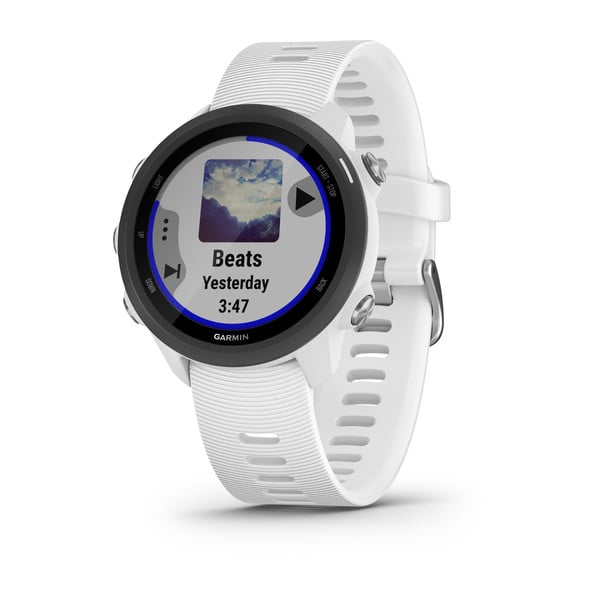
How to Incorporate Meditation into Your Cycling Smart Trainer Regime
To slow down and help make sense of their lives, some people turn to prayer or yoga. Others find time to meditate while they’re on a cycling smart trainer. Bringing some mindfulness to your smart trainer regime is easier than you might think. And it’s a great way to give both your mind and your legs a thorough workout.
Train Your Brain and Your Legs
French mathematician Blaise Pascal once said that all of humanity’s problems stem from man’s inability to sit quietly in a room alone. Many of us feel that we should be meditating more but can’t bring ourselves to do it. The idea of sitting alone quietly with our thoughts can be a scary prospect. In fact, to find relief from constant thinking, internal comparisons and incessant, repetitive chatter, many of us resort to living in a world of distraction.
For those who can’t find the time or motivation to meditate during the day, why not try to combine your smart trainer session with mindfulness practice?
This simple hack has many benefits. And to make it more effective, with our remarkably quiet direct-drive trainers, you really can sit in silence, just like Pascal recommended, while you turn the pedals and tune in.
Mindfulness Amplifies Satisfaction
Meditative practice doesn’t have to involve sitting on a cushion for 8 hours a day in a cave in Tibet. Any activity that we do mindfully and with intention is a form of meditation, and cycling is no different.
By incorporating mindfulness into our smart trainer regime, the session becomes as much a workout for your mental health as it is for your physical health. In addition to the health benefits, studies show that combining exercise and mindfulness leads to increased levels of satisfaction.
7 Ways to Bring More Mindfulness to Your Smart Trainer Routine
It’s time to disconnect from the BLUETOOTH® sensors and connect to your deeper self as you enter the world of mind-body alignment. It’s a world where you revel in burning quads and deep mindful breathing as you take your mental and physical health to new levels.
1. Begin with Firm Intention for the Session.
Many of us use exercise as a method of escape. While an hour-long blowout on the smart trainer may serve in the short term, the deeper issue is that we still must deal with underlying issues at some point.
In the minutes before you start your session, try and tap into what’s going on in your life. What do you need most? Do you need more focus and attention? Or perhaps you’re dealing with problematic emotions. Starting off with the solid intention to be with your feelings can often be very powerful when coupled with your intention to exercise.
2. Unplug from Technology.
To meditate effectively, you’ll have to forego much of the modern technology that distracts us from ourselves. That means no TV, audiobooks, podcasts, music, smartphones or National Geographic magazines. Try doing this one day a week at least to get started.
3. Take Stock of Your Body.
Many of us take refuge in our heads. But effective meditation is all about getting out of one’s head and becoming free from rummaging thoughts.
As you begin your smart trainer session, try bringing your attention to physical sensations. What parts of your body feel stiff in the beginning? What muscles can you feel being worked? Can you feel the subtle shift in your torso with each pedal stroke? How about the rolling of the ankles at the bottom of the stroke? Simply tune in and notice what you feel.
4. Sync Your Breathing.
How you breathe has a profound effect on your nervous system, and traditionally it has always been an important anchor in meditation. To prevent your mind from wandering excessively, try to anchor your attention to your breath. Maintain a steady rhythm of breathing that’s synchronized with your pedal stroke. Notice how deeply you breathe. Are you breathing deep into the abdomen, or are you taking quick shallow breaths into the chest? Notice how that changes with intensity. If you notice you’ve become lost in thought, simply return to the breath to reset your attention.
5. Experiment with Other Anchors.
Not everyone can anchor their attention to the breath successfully. But luckily when cycling, there are several other options. The pedal stroke can be quite an effective anchor for cyclists. Pick a point in the stroke to anchor your attention and try to tune in deeply to the rhythm it taps out.
6. Revel in the Intensity.
Mindfulness is all about acceptance. And what better time to practice this than when you’re 3 minutes into a VO2 max interval? Cycling is one of the most physically demanding sports there is, and a mindful approach to training at high intensity can help you practice acceptance of what is.
If you’ve set the intention of doing several high-intensity intervals, then commit to completing them. Notice any desire from within that wishes you were done or that it was a little easier. Remind yourself just why you’re doing the intervals in the first place, and take your focus back to your anchor.
7. Always Be Kind to Yourself.
Be present with your thoughts. Are you comparing yourself to others or to your own past performance? Are you beating yourself up for the inability to maintain a given power output? Show some gratitude to yourself for having taken the time to look after both your physical and mental well-being. Few take the responsibility to do so, and the world at large will benefit from your actions.
By Jack Stafford, specialist cycling copywriter who lives and rides in southern Italy.
The information provided through our blog is not intended to be and is not a substitute for professional medical advice, diagnosis or treatment that can be provided by your own health care professional. Garmin makes no attempt to diagnose, treat or cure any physical ailment, or any mental or emotional issue, disease or condition. Our blogs are intended to help you reach your own health and wellness goals.
FOOTNOTES:
The Bluetooth word mark and logos are registered trademarks owned by Bluetooth SIG, Inc. and any use of such marks by Garmin is under license.






